Cephalopods
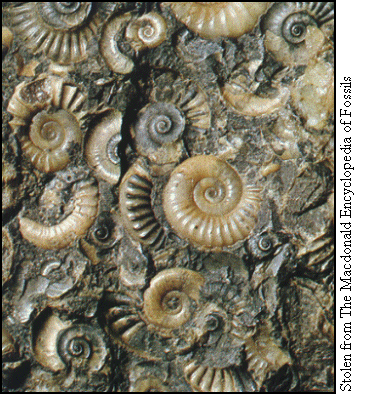
This section contains:-
-
-

 Ammonites.
Ammonites.
-

Nautiloids:
This is the general morphology of a nautiloid:
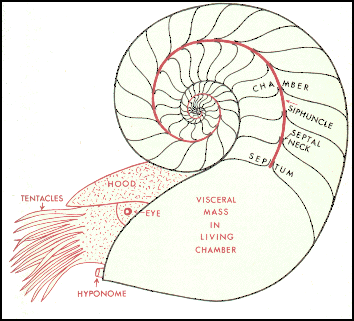
Nautiloids live in a spiral shell separated into air filled chambers. The chambers are connected to the animal by a tube, the siphuncle. With this tube the animal can control the gas pressure in each chamber and control its bouyancy and thus control its water depth. These animals are preditors capturing their prey with the multitude of tentacles. When threatned they can withdraw into the shell and close up the hood. They can also move swiftly by ejecting fast streams of water through the hyponome.
The Nautilus is one of the longest existing species on this planet. Their ancestry can be traced back to the late Cambrian and early Ordovician times. I do not have any actual fossils, just pictures.
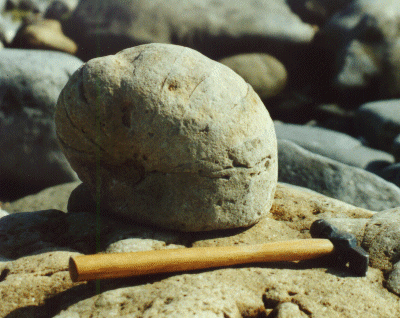
I found this very battered specimen lying on the beach at Lyme Regis. The size, as you can see, made it particularly prohibitive to carry home in my rucksack. The shape of the coiled shell and the suture lines are clearly visible.It is from the Lower Cretaceous and measures about 25cm.
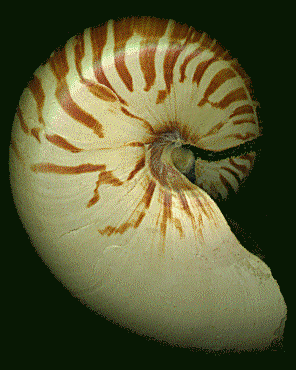
The Pearly Nautilus is found today only in the remote depths of the Pacific Ocean. It is collected as an item to sell to the tourists. Pacific island fishermen can actually earn more by trapping the nautilus than from catching fish. Although I dissapprove of the collection and sale of these animals (the trade has drastically reduced the population), this specimen, given to me by a friend, was picked up after the animal had died: There are limpets still stuck to the inside of the shell.

Orthocones:
Orthocones are extinct, straight shelled cephalopods. They seem to have a similar morphology to the nautilus but the shell is straight. The size ranged greatly from a few centimetres to several metres.

Short fossil fragments are common in the Silurian deposits near Ludlow , England. The one above is a 4cm piece of Orthoceras bullatum, below are Otrhoceras mocktreense and Orthoceras duponti, both about 2cm.
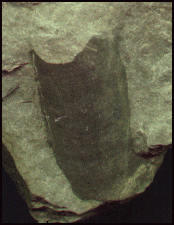

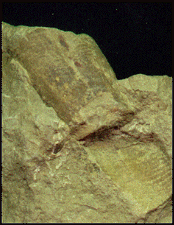
Also common in the Silurian limestone are the separated septa which separated the individual chambers of the shell.
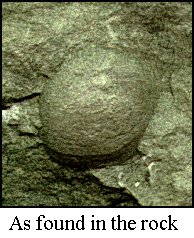

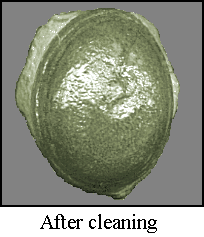
These are from Leurocycloceras whitcliffense and measure about 2cm.
It is also possible to find almost complete specimens of smaller species:

Identification of exact species is difficult. Specimen length 6cm.

Belemnites:
Belemnites were marine animals resembling the modern squid. They were common in the Jurassic and Cretaceous but species have been found back as far as the Devonian. All that is usually found is the stout bullet shaped guard which served as an internal skeleton.
Belemnite morphology.

A spine, the pro-ostracum, attached to the guard extended forward into the body of the animal. At the anterior end of the guard was a conical depression, the alveolus, which contained the calcareous chambered phragmocone. This is probably a remnant pointing to a common nautiloid ancestry. Some species also carried horny hooks on the tentacles for the capture of prey.
In most fossils the pro-ostracum is absent and the phragmocone is crushed or also absent.
The pictures below show the variety of shapes and sizes that belmnites took.
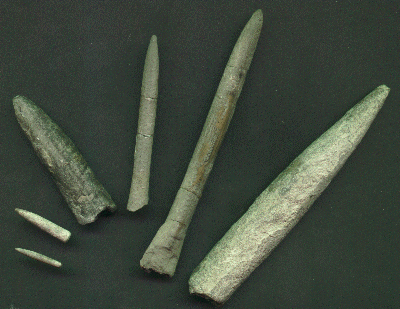
Belemnites from Lyme Regis.
(size varies from 1cm to 10cm)
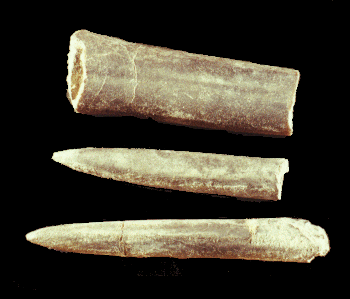
Belemnites from Whitby.
(size about 4cm)
I have also been able to find belmnite fragments at Brora and Cromarty, both also Jurassic sites.
Because of the huge variety of shapes and sizes, the identification of individual species is almost impossible.


 Nautiloids.
Nautiloids.
 Orthocones.
Orthocones.
 Ammonites.
Ammonites.
 Belemnites.
Belemnites.
















